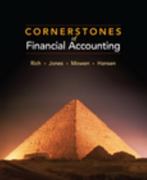Question
All of the following are part of Reg NMS, except a. Order protection rule b. sub-penny pricing rule c. Market data rule d. continuous trading
All of the following are part of Reg NMS, except
a. Order protection rule
b. sub-penny pricing rule
c. Market data rule
d. continuous trading rule
An immediate-or-cancel order is used :
a. to hide information about demand
b. by retail traders to submit limit orders
c. to circumvent Reg NMS
d. to improve priority for the order
The principle of public priority prevents an NYSE specialist from
a. bidding or offering more aggressively than public customers
b. buying or selling to public customers
c. buying at a price bid by a public customer
d. lifting a customer offer
Retail order flow is more desirable to a market maker because, relative to institutions/institutional orders,
a. retails traders are less likely to be informed
b. retail traders are more likely to use order splitting strategies
c. retail traders are more likely to direct their orders to specific trading venues
d. retails orders are usually subject to payment for order flow arrangements.
When the last sale price of PQR is $42, I enter a stop loss order trailing by $3. In which of the following situations does my order get triggered? Circle all that apply.
a. the trade at $42 is followed by trades at $40, $41 and $39.
b. the trade at $42 is followed by trades at $40, $43 and $41.
c. the trade at $42 is followed by trades at $40, $44 and $41.
d. the trade at $42 is followed by trades at $40, $44, $43, $44, $43 and $41.
With ABC trading around $55, an investor enters a stop loss order: sell 200 shares stop $52, limit $50. This is equivalent to ----
a. sell 200 shares limit $50.
b. sell 200 shares limit $52.
c. sell 200 shares at the market
d. None of the above.
Consider the pure random walk model, pt= pt-1 + ut . The ut in this model captures
a. New public information
b. Drift or price trend
c. New private (asymmetric) information
d. The probability of a takeover bid.
The PX exchange uses maker/taker pricing; orders that add liquidity receive a rebate of $0.001 per share; orders that take liquidity pay $0.002 per share. Sam just entered an order to buy 100 shares limit $20. This order goes into the book. Shortly thereafter Mona enters an order to sell 100 shares, limit $19. Sams and Monas orders are matched, and a trade occurs. In this situation, which of the following is correct?
a. Sam receives $0.20; Mona pays $0.10.
b. Sam receives $0.10; Mona pays $0.20.
c. Sam pays $0.10; Mona receives $0.20.
d. Sam and Mona each receive $0.20.
Iceberg order is:
a. an order that is canceled if not filled
b. a type of market order
c. an intermarket sweep order
d. a partially hidden order
SOES bandits on Nasdaq profited from:
a. placing high bids and canceling them before calls
b. hitting market makers stale quotes
c. subverting Reg NMS rules
d. stealing from investors accounts
Step by Step Solution
There are 3 Steps involved in it
Step: 1

Get Instant Access to Expert-Tailored Solutions
See step-by-step solutions with expert insights and AI powered tools for academic success
Step: 2

Step: 3

Ace Your Homework with AI
Get the answers you need in no time with our AI-driven, step-by-step assistance
Get Started


